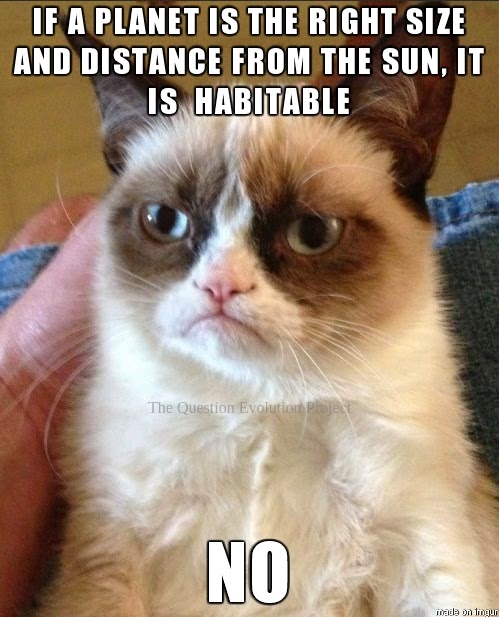Considering Habitability of Extrasolar Planets
Excitement has been raised with the discovery of Kepler-186f, an exoplanet that may be in the "habitable zone". This zone is an area that is the right distance from its star so that it will be neither too hot nor too cold for liquid water to exist. NASA's Kepler space telescope monitors many stars and check them for variations in brightness which may be caused by planetary activity.
 |
| Artist's conception of Kepler-186f. Image credit: NASA Ames/SETI Institute/JPL-Caltech |
Kepler-186f, the fifth planet orbiting an M1-spectral type red dwarf star in the constellation Cygnus, will go down in history as the first earth-sized extrasolar planet discovered in its star’s habitable zone. (An “extrasolar” planet, or “exoplanet,” orbits a star other than our own.) Kepler-186f has a diameter just 10% greater than earth’s, so if it turns out to have a rocky earth-like composition and if it has an atmosphere, there’s a reasonable chance it could have that all-important ingredient for life—water. But does that mean it is inhabited or even habitable? No.
To be in the “habitable zone” means to orbit its star at a distance likely to allow liquid water to exist. Planets in the habitable zone of a star may not be water-friendly or habitable, as evidenced by Venus in our own solar system. And liquid water can occur in places outside a “habitable zone” as evidenced in our own solar system by Saturn’s moon Enceladus and Jupiter’s moon Europa. But when it comes to checking out faraway extrasolar planets, the habitable zone is the most reasonable place to start looking for a watery rocky world like our own.Read the rest of this extremely interesting article at "Quest for Goldilocks Planet Scores a Hit with Kepler-186f".
With an orbital period of 130 days, Kepler-186f is closer to its star than we are to ours, but its sun is smaller, fainter, and cooler. Four inner planets, Kepler-186 b, c, d, and e range from 8% to 40% larger than earth. They are too close to their star to be habitable. Answers in Genesis astronomer Dr. Danny Faulkner says, "Of the many planets found thus far, precious few have been in the habitable zones of their respective systems, so this recent discovery is of great significance."
